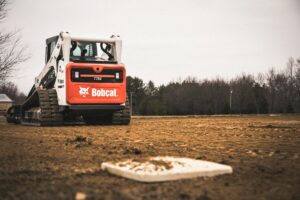Technology
Track Loaders: Key Equipment for Various Industries

Anyone who wants to hire a track loader should understand more about them before sealing the deal. These powerful machines can handle many tasks and projects, which is why they are so popular. Their traction and versatility allow them to work in adverse conditions where other equipment might struggle.
Track loaders also have a powerful lifting capacity, can maneuver in tight spaces, and support multiple attachments. They can be used for grading surfaces, moving materials, and many other applications. This post will explore key things users need to know before renting track loaders.
Common Types of Loaders
There are numerous kinds of loaders contractors can use for their projects. For instance, they can use a backhoe loader, which functions as an excavator and a loader. The front part has a bucket, while the rear has a backhoe. This equipment is one of the most popular track loader rentals because of its versatility. It can dig, back-fill, trench, and aid material handling in different applications.
Skid steer loaders are known for their ability to turn within their footprint. These loaders have a tiny rigid frame and can work on tracks or wheels. Some people prefer using them because they are maneuverable and compact. This means they are suitable for confined spaces like an indoor environment or in an urban project site. Skid steer loaders have augers, buckets, forks, and other attachments.
Track or crawler loaders have excellent traction, stability, and maneuverability, especially on challenging terrains. Since crawler loaders operate on tracks, they are unstable for quarrying, land clearing, and mining operations. Thanks to their powerful lifting capability and solid design, the equipment can handle significant quantities of material at a go.
Attachment Options
Contractors like using front loaders in construction and manufacturing work because different attachments can help extend each equipment’s capability, making them more versatile. With the right attachment, any loader can do more than digging and loading. The attachments include brooms, blades, buckets, compactors, bale spears and grabs, grapples, forks, winches, mulchers, frail mowers, tillers, and shears.
So, after determining the best loader for a project, contractors need to decide which attachment is ideal for their project. The contractor should also ask whether the attachments are rented separately to determine how the choice of the equipment attachments affects the project costs.
Buying Vs. Renting
People who have never used a track loader might consider buying a new or used one instead of renting one. Buying heavy equipment is often an ideal option for a big company that uses the same equipment for multiple daily tasks. However, those who have one project or need different kinds of loaders for each project should consider renting. Besides, renting track loaders eliminates insurance, repair, and storage costs since the rental provider caters to these costs.
Before deciding whether to rent or buy, key factors to keep in mind include job frequency, project duration, equipment availability, and available funds or project budget. If the funds are limited or the equipment is needed for one project, renting is better. Also, companies that lease loaders have advanced equipment that enhances work efficiency and charges affordable prices and they take care of maintenance of the equipment, so they know who to reach out to for an emergency ball screw repair service.
Track loaders are essential equipment that contractors and industrial users cannot overlook. The equipment is reliable and can handle many tasks and projects. However, people who rely on track loaders do not necessarily need to buy the equipment; they can rent from the leading equipment rental providers at reasonable fees.
















